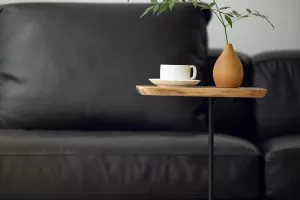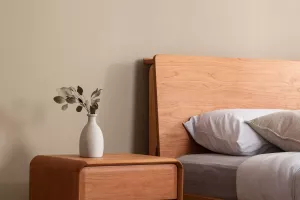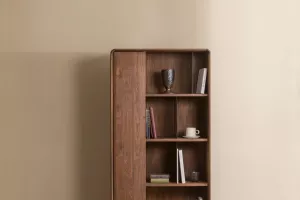Flower arrangement can be divided into two major schools in terms of origin and development style, namely oriental flower arrangement represented by Japan, and western flower arrangement represented by European and American countries. This article will introduce the difference between Oriental and Western flower arrangements.
Western flower arrangement pays attention to a strong sense of beauty, and has the characteristics of using a large amount of flowers, focusing on geometric shapes, bright colors, and being rational, giving people an unrestrained and enthusiastic impression. Oriental flower arrangement pays attention to the sense of line. It has the characteristics of using less flowers, pursuing lines, elegant colors, and full of artistic conception. It focuses on the beauty of natural posture. The color of flower arrangements is elegant. Generally, only two or three colors are used, which is concise.
The difference between East and West flower arrangement stems from their respective cultural differences. Such as geographical environment, philosophical thinking, values and so on.
When it comes to Western-style flower arrangements, everyone will definitely think of bouquets. To celebrate friends' birthdays, anniversaries, Valentine's Day and other important days, everyone will immediately consider sending a bouquet of fresh flowers to express their feelings. In the popular Western-style weddings, from the bride's bouquet, to the large flower arch and the table decorated with flowers, all bring out the atmosphere of joy and happiness.
After the ikebana master of the oriental ikebana is installed, it is a new beginning. With the passage of time, we can quietly watch the whole life process of them from budding to blooming to withering, and more expressing a state of mind and experience attached to plants.
Western-style flower arrangements are more about setting off the atmosphere, while oriental flower arrangements are more like recorders of time and traces of life.
1. Use of the utensils
Western-style flower art has various choices of utensils, but most of them are mainly Western-style utensils, and even no flower utensils, such as holding flowers, and wedding car decorations. The utensils in the oriental flower arrangement have many classical shapes, and there are also requirements for the material. In the classical flower arrangement, there are three main types of utensils: bronze ware, fine porcelain and bamboo and rattan ware. The flower utensils in the oriental ikebana are an indispensable part of the flower arrangement and are often compared to the earth.
2. Styling
Western-style floral art highlights the artistic expression with exaggerated colors and shapes. The shape is influenced by the Western concept of three-dimensional composition, and it pursues variation and visual stimulation and impact. Oriental ikebana advocates the laws of nature in terms of color, with elegant shapes, beautiful lines, rewriting meaning, paying attention to taste and artistic conception, not seeking quantity, color and weight, but seeking charm and elegance. In terms of modeling, the creators have basic artistic literacy requirements, especially the grasp and design of the sense of space are the main points.
3. Culture
The main points of Western-style flower art are under the background of the festive atmosphere and the attention to the beauty of the flower itself, focusing on the expression techniques of modern art. In the development and evolution of nearly a thousand years, Oriental flower arrangement not only pays attention to the pursuit of the natural wisdom of plants, but also carries the civilization process of changes in human life and daily life over the past thousand years. It is a comprehensive subject combining culture and art.
If common dishes are used to describe the difference between Western-style flower arrangements and Japanese flower arrangements, the former is French cuisine with rich and varied ingredients, while the latter is Japanese cuisine that focuses on refining the original flavor of the ingredients.
In the Western-style flower arrangement, many flower materials are combined and interwoven like a woven carpet, and then designed according to the author's preferences, which is like the beauty of "addition" advocated by French cuisine. In contrast, Japanese flower arrangement emphasizes the individuality of each flower material as the material. It does not use a large number of materials as in Western flower arrangement, and even cuts off excess branches and leaves to highlight the outline of the flower to deepen the impression. Japanese flower arrangement is like Japanese cuisine, advocating the beauty of "subtraction".
This difference in presentation methods comes from differences in divergent thinking. The thinking of Western-style flower arrangement can be understood as follows: just like the floral decoration of a wedding banquet, considering that the bride is eager to interpret the most beautiful moment, it is necessary to use as many flowers as possible, and use additive methods to decorate.
The thinking of Japanese flower arrangement is different, it respects "buds in buds". You can also use blooming flowers, but at the same time keep as many buds as possible. This is because the essence of Japanese flower arrangement is "change". The flowers in the bud form gradually bloom, and then wither after blooming. It is the philosophical thinking of Japanese flower arrangement to watch the life changes of a flower until the end of its life.


